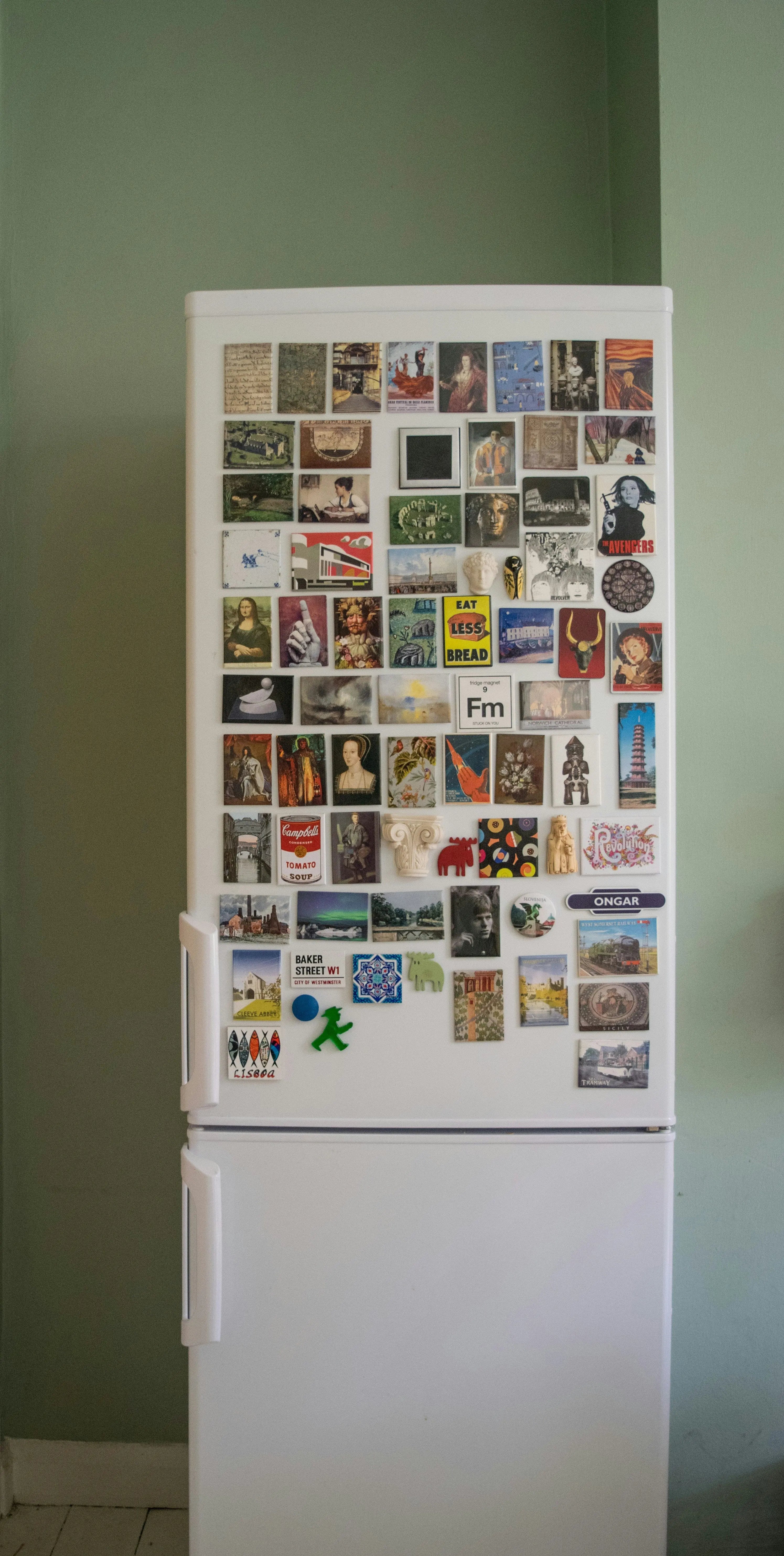The Full Size Refrigerator Guide
When it comes to selecting a new refrigerator, size matters. A full size refrigerator can be a game changer for your home, offering ample space and advanced features to accommodate your lifestyle. Whether you're a culinary enthusiast, a large family or simply someone who loves to entertain, understanding the ins and outs of full size refrigerators is crucial.
Understanding Full Size Refrigerators
A full size refrigerator typically refers to a unit that has a total capacity of over 20 cubic feet. These appliances are designed to meet the needs of households requiring significant storage space for their groceries and culinary endeavors. Unlike compact or mini fridges, a full size unit will often come with a variety of compartments and features to keep your food organized and at the perfect temperature.
Reasons to Consider a Full Size Refrigerator
You might want to consider investing in a full size refrigerator if you find yourself running out of space often or if you tend to buy in bulk. For those who enjoy entertaining, a larger fridge will ensure that you have enough room to store platters and beverages. Additionally, if you're passionate about cooking, a full size refrigerator can accommodate larger containers and food items that you wouldn't be able to fit in a smaller model.
Factors to Keep in Mind Before Buying
Before purchasing a full size refrigerator, there are several factors to consider:
-
Space: Ensure that you have enough room in your kitchen or designated area for the refrigerator. Remember to measure the height, width, and depth of the space, and consider the need for clearance to open doors or passageways.
-
Energy Efficiency: Look for models with energy-saving features to keep your utility bills in check. You can refer to our article on refrigerator efficiency unraveled understanding amp usage for more insights.
-
Capacity: Think about your storage needs. How much fridge and freezer space do you require? Full size refrigerators can vary in capacity, so it's important to choose one that aligns with your household's demands.
-
Lifestyle: Your eating habits and shopping patterns should influence your decision. If you purchase more frozen foods, consider a model with a larger freezer compartment. Conversely, if you prefer fresh produce, fridge space may be more critical.
-
Features: Modern refrigerators come with a host of features such as water and ice dispensers, smart home connectivity, and customizable temperature zones. Decide which features are must-haves for you.
-
Budget: Full size refrigerators can range significantly in price. Set a realistic budget that reflects your priorities in terms of size, features, and energy efficiency.
By keeping these factors in mind and doing thorough research, you can find the perfect full size refrigerator that suits your needs and enhances your daily life. For more detailed information on specific types of refrigerators, such as French door or side-by-side models, be sure to explore our comprehensive guides.
Types of Full Size Refrigerators
The full size refrigerator is an essential appliance for your home, whether you're a culinary enthusiast, a large family, or simply someone who appreciates the convenience of ample food storage. With various types available, each offers unique benefits that cater to different lifestyles and kitchen layouts. Let's explore the most common kinds of full size refrigerators to help you make an informed decision.
French Door Refrigerators
French door refrigerators are a popular choice that combines style and functionality. They feature two doors that open outward to reveal the fridge compartment, with a freezer drawer below. This design offers easy access to fresh food at eye level and spacious shelves for efficient organization.
They are ideal for those who prioritize convenience and often entertain guests, as their wide shelves can accommodate large platters and dishes. Moreover, many models come with advanced features like customizable temperature zones and in-door ice and water dispensers. If you're looking to modernize your kitchen, a French door refrigerator might be the perfect fit. For more insights on French door models, check out our article on innovative designs: what is a french door fridge.
Side-by-Side Refrigerators
Side-by-side refrigerators offer two vertical compartments, with one side serving as the fridge and the other as the freezer. This design is beneficial for those who want easy access to both refrigerated and frozen items without bending over.
These refrigerators are often equipped with through-the-door ice and water dispensers, making hydration and food prep a breeze. They can also be a great fit for narrow kitchens since the doors don't require as much clearance to open fully. For more detailed information, dive into our guide on revolutionize your kitchen: best side by side refrigerators for you.
Top Freezer Refrigerators
Top freezer refrigerators are the traditional choice, with the freezer compartment located above the refrigerator section. This arrangement is often more energy-efficient and cost-effective, making it an excellent option for budget-conscious households.
These units are straightforward, offering ample space for daily essentials and frozen goods. They work well in a variety of settings, from apartments to family homes. Discover the range of options available in our article on efficiency meets style: best top freezer refrigerators for the modern home.
Bottom Freezer Refrigerators
Bottom freezer refrigerators flip the traditional design by placing the freezer at the bottom. This means less bending down to reach fresh foods, which are at a more convenient height. The freezer often pulls out as a drawer, making it easier to see and organize frozen items.
These models are a smart choice for those who use fresh ingredients more frequently than frozen ones and prefer them within easy reach. Explore the variety of bottom freezer designs in our article on banish the clutter: best bottom freezer fridge for organized living.
Selecting the right full size refrigerator is about understanding your space, needs, and habits. Consider how you shop, cook, and entertain to determine which type aligns with your lifestyle. With the right fridge, you can keep your food fresh, your kitchen running smoothly, and your household happy.
Features to Look For
When you're in the market for a full size refrigerator, there are several key features to consider. These attributes not only affect the functionality and performance of the appliance but also contribute to the efficiency and convenience of your daily kitchen operations.
Capacity and Size
The capacity of a refrigerator is typically measured in cubic feet and directly correlates with the amount of food and beverages you can store. Full size refrigerators vary in size, but here's a general guide to help you determine the right capacity for your needs:
| Family Size | Suggested Refrigerator Size |
|---|---|
| Single or couples | 12-16 cubic feet |
| Small families (3-4 people) | 18-20 cubic feet |
| Larger families (5+) | 22+ cubic feet |
It's crucial to measure the space where you plan to install your new refrigerator to ensure it fits snugly without obstructing pathways or cabinets. Adequate space should be left for door swing and ventilation as well. For help determining the perfect fit, consider reading the right fit determining the ideal double door side by side fridge size.
Energy Efficiency
Modern refrigerators come with energy ratings that inform you about their power consumption and efficiency. Look for units with an ENERGY STAR certification or those that boast high energy efficiency to save on electricity bills and reduce environmental impact. To dive deeper into understanding your refrigerator's energy usage, you might want to read refrigerator efficiency unraveled understanding amp usage.
Temperature Control
Precise temperature control is vital for preserving the freshness and extending the shelf life of your groceries. Modern refrigerators offer digital controls that allow you to set specific temperatures for different compartments. For insights on the optimal refrigerator temperature, check out unlocking the perfect cool what temp should a fridge be.
Organization and Storage Options
The internal design of your refrigerator can make a big difference in how you organize and access your food. Look for features such as adjustable shelves, door bins, crisper drawers, and deli/snack compartments. These can help streamline your food storage and make it easier to find what you need. Those seeking to maximize their space may also be interested in streamline your storage top rated under counter freezer drawers.
Ice and Water Dispenser
Many full size refrigerators come with built-in ice and water dispensers, providing convenience and encouraging hydration. Consider the placement and filtration system of these dispensers, as well as their impact on the refrigerator's capacity. If you prefer models without this feature, you may be interested in options like ice-free and stylish top freezer refrigerators without ice maker.
Each of these features contributes to a well-rounded full size refrigerator that suits your personal needs and preferences. Whether you prioritize capacity, energy efficiency, precise temperature control, organizational flexibility, or the convenience of an ice and water dispenser, ensure that you select a model that aligns with your lifestyle and kitchen requirements.
Installation and Placement Tips
Installing a full size refrigerator correctly is essential to ensure its optimal performance and longevity. Here are some guidelines to help you prepare for the arrival of your new appliance.
Measuring Your Space
Before you bring a new refrigerator into your home, you need to measure the area where it will be placed. This will help ensure that the fridge fits comfortably without obstructing pathways or cabinets.
- Measure the width, depth, and height of the space.
- Allow for at least a one-inch clearance on all sides of the refrigerator to ensure proper air circulation.
- Consider the space needed for the door to open, especially if your kitchen has an island or if the refrigerator will be placed in a corner.
- Remember to measure any doorways or hallways the refrigerator will need to pass through during delivery.
Here is a simple table to help you note down the measurements:
| Measurement | Size (inches) |
|---|---|
| Width | |
| Depth (with and without doors) | |
| Height | |
| Doorway/Hallway Width |
Proper Ventilation
Proper ventilation is critical for a refrigerator to operate efficiently. Without adequate airflow, your fridge can overheat, leading to premature wear and potential food spoilage.
- Ensure there's enough room above and on the sides for heat to disperse.
- Do not push the refrigerator completely against the wall; leave a gap for air circulation.
- Avoid placing the refrigerator near heat sources like ovens, dishwashers, or direct sunlight, as this can cause the compressor to work harder.
Leveling Your Refrigerator
Leveling your refrigerator is not just about stability; it's also about function. An unlevel fridge can lead to poor door sealing, inefficient cooling, and even increased energy consumption.
- Most refrigerators come with adjustable legs or rollers for leveling.
- Use a level tool to check both side-to-side and front-to-back leveling.
- Once the refrigerator is in place, adjust the legs or rollers until it is perfectly horizontal.
Proper installation and placement of your full size refrigerator will enhance its performance and extend its lifespan. For more information on selecting the right refrigerator for your home, take a look at our articles on choosing the right counter depth french door refrigerator and efficiency meets style best top freezer refrigerators for the modern home. If you're interested in alternative styles, explore our guides on innovative designs what is a french door fridge and vintage charm modern convenience your guide to small retro fridges.
Maintenance and Care
Maintaining and caring for your full size refrigerator ensures it runs efficiently and prolongs its lifespan. Proper cleaning, defrosting, and understanding food storage guidelines can keep your appliance in top condition and your food safe.
Cleaning and Defrosting
Regular cleaning is essential for health and efficiency. Here’s how to keep your refrigerator spotless and odor-free:
- Unplug and Empty: Safely unplug the fridge and remove all items.
- Shelf and Drawer Removal: Take out all removable components.
- Cleaning Solution: Mix a mild detergent with warm water or use a vinegar solution for natural cleaning.
- Wipe Down: Clean the interior surfaces, including the walls and the door seal.
- Dry Thoroughly: Use a clean cloth to dry all surfaces.
- Defrost the Freezer: If your model is not frost-free, turn off the freezer to allow the ice to melt, and clean it as above.
- Reassemble and Restock: Put shelves and drawers back and return the food items.
Defrosting your freezer should be done periodically to prevent ice build-up, which can reduce efficiency. Some modern refrigerators feature frost-free technology, eliminating the need for manual defrosting. For those with bottom or top freezer compartments, refer to our articles on modernize your kitchen best counter depth bottom freezer refrigerators unveiled and efficiency meets style best top freezer refrigerators for the modern home for specific care instructions.
Food Storage Guidelines
Proper food storage is imperative to prevent spoilage and maintain freshness:
- Temperature: Keep your refrigerator at the optimal temperature to preserve your food's freshness. Unlocking the perfect cool what temp should a fridge be provides detailed guidance.
- Organization: Use the crisper for fruits and vegetables and the designated compartments for meats and dairy products.
- Expiration Dates: Regularly check and organize items based on their expiration dates to reduce waste.
- Leftover Storage: Store leftovers in airtight containers and consume them within a few days.
For specifics on how long certain foods last in the fridge, including the shelf life of chicken and how long soup can last, our articles provide comprehensive guidelines.
Troubleshooting Common Issues
Encountering issues with your refrigerator can be frustrating. Here are some common problems and steps to resolve them:
- Refrigerator Not Cooling: Check if the thermostat is set correctly and clean the condenser coils.
- Strange Noises: Determine if the sounds are coming from the inside (could be a fan) or the back (could be the compressor or condenser).
- Water Leakage: Ensure the defrost drain isn't clogged and the water line connected to the ice maker isn't leaking.
For more complex issues, consulting the manufacturer’s manual or seeking professional assistance may be necessary. For tips on optimizing your refrigerator's efficiency and understanding its energy consumption, our article on refrigerator efficiency unraveled understanding amp usage can be a helpful resource.
Regular maintenance, including cleaning, defrosting, and adhering to food storage guidelines, will keep your full size refrigerator functioning effectively. Addressing common issues promptly can also help prevent more significant problems down the line, ensuring your appliance remains a reliable part of your household.
Get Your Upgrade or New Addition at Fridge.com
Whether you're searching for your perfect fridge, freezer, wine fridge, beer fridge, ice maker, or kegerator, we have what you need.
Shop the world's best brands at Fridge.com.
We also have tons of awesome articles about kitchen stuff and home news. Enhance your home, garage, backyard, patio, and office with the coolest essentials. With every necessary type of residential refrigerator or freezer in our collection, we've got you covered.
Elevate your game and shop now at Fridge.com!






